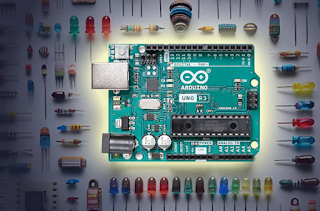How it work
This example will guide you to make a fade on LED using Arduino IDE. As the previous lesson you saw how you can bright an LED up and turn it back off and now I am going to show you about you can make it fade ON and fade OFF.
Requirements
- Arduino board
- Breadboard
- hook-up wires
- LED 3v
- 220 Ohms or 250 Ohms resister
Code
int led = 9; // the PWM pin the LED is attached to
int brightness = 0; // how bright the LED is
int fadeAmount = 5; // how many points to fade the LED by
// the setup routine runs once when you press reset:
void setup() {
// declare pin 9 to be an output:
pinMode(led, OUTPUT);
}
// the loop routine runs over and over again forever:
void loop() {
// set the brightness of pin 9:
analogWrite(led, brightness);
// change the brightness for next time through the loop:
brightness = brightness + fadeAmount;
// reverse the direction of the fading at the ends of the fade:
if (brightness == 0 || brightness == 255) {
fadeAmount = -fadeAmount ;
}
// wait for 30 milliseconds to see the dimming effect
delay(30);
}






















